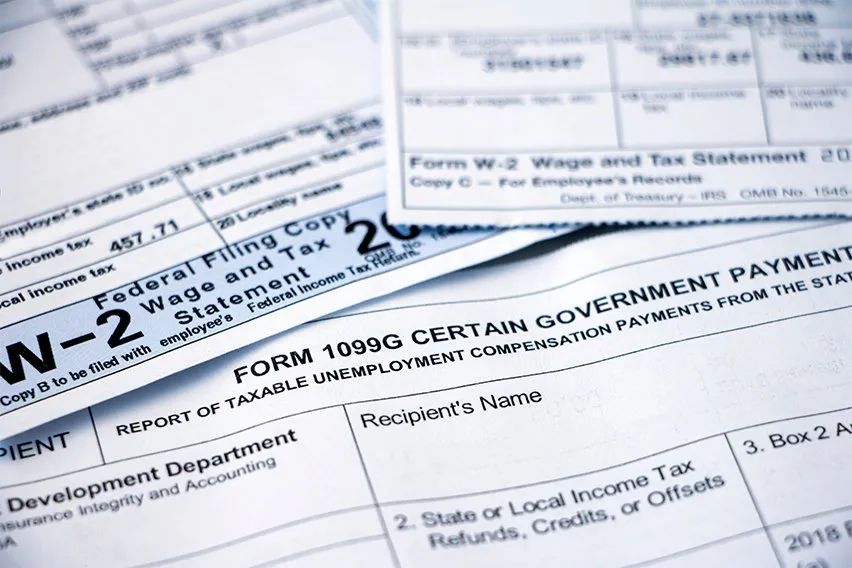1099 vs. W-2: Difference Between W-2 Employees & 1099 Contractors

The IRS estimates that millions of W-2 employees are misclassified as 1099 independent contractors. As a business owner, you have different tax obligations when paying a 1099 vs. a W-2 worker. This includes paying half of a W-2 employee’s Social Security taxes.
Misclassifying workers can lead to a significant amount of tax penalties and forced back pay, so it’s essential to understand how to determine whether a worker is a W-2 or 1099.
This guide will walk you through how the two differ, how to correctly classify your worker, and the consequences of misclassifying employees.
Here’s What We’ll Cover:
What’s the Difference Between an Independent Contractor and a Regular Employee?
Pros and Cons: Comparing 1099 Workers and W-2 Employees
Is Your Worker a W-2 Employee or Independent Contractor?
Consequences of Misclassifying an Employee as an Independent Contractor
Bottom Line: 1099 vs. W-2 Workers
More Resources on Small Business Accounting
What’s the Difference Between an Independent Contractor and a Regular Employee?
One key difference between independent contractors and regular employees is the tax implications, which include payroll tax compliance.
When you hire a W-2 worker, you have to pay half of their FICA taxes (Social Security tax and Medicare tax). A 1099 worker, on the other hand, is responsible for paying self-employment tax which means they pay 100% of their Medicare and Social Security taxes.
With W-2 workers, you’re also in charge of payroll tax withholding and income tax withholdings. When paying a 1099 worker, you don’t have to withhold any taxes.

It’s also common for a salaried employee to receive certain benefits that 1099 workers don’t receive. Employee-type benefits can include health insurance, disability insurance, workers compensation insurance, and life insurance.
Another notable difference is the tax forms given to each. Most employers know to send a W-2 tax form to their employees, but employers must follow reporting rules for non-employees too.
If you’ve paid a non-employee over $600, you need to send them a 1099 form. Note that as of 2020, you need to send a 1099-NEC instead of Form 1099-MISC.
Pros and Cons: Comparing 1099 Workers and W-2 Employees
Hiring a 1099 worker can save a business owner a lot of money when it comes to payroll taxes and employee benefits. However, a self-employed independent contractor may not be as committed as a W-2 employee because they likely work with many other businesses too.
Also, when working with self-employed workers, you have to relinquish some control. Independent contractors set their own hours, set their own contract terms, and are able to work however they want.
Is Your Worker a W-2 Employee or Independent Contractor?
The IRS has many resources to help you determine which workers are W-2 employees or 1099 contractors. To help you determine the correct classification, the IRS breaks it down into three categories:
- Behavioral control
- Financial control
- Type of relationship
Behavioral Control
A business owner has more control over W-2 employees. One key sign that a worker is a W-2 employee is if you control how the worker will do work from start to finish. This includes controlling where exactly and when exactly the employee will do work and what tools they will use.
Financial Control
Are you paying the worker a guaranteed regular wage? Do you reimburse business expenses incurred by the employee? You’ll generally pay a contractor per project, and they’ll usually incur the cost of business-related expenses.
Type of Relationship
It’s common for contractors to have their own contracts and terms. Also, contractors generally don’t receive benefits like sick pay nor a retirement plan.

Consequences of Misclassifying an Employee as an Independent Contractor
Treating a W-2 employee as an independent contractor will lead to tax penalties and forced back pay. It could also severely hurt your reputation and work culture. No one will know if it happened by mistake or intentionally. It may make a business owner look unethical because they would’ve saved a lot of money at the employee’s expense.
Bottom Line: 1099 vs. W-2 Workers
Both W-2 and 1099 workers have their advantages, but you have to ensure you’re not reaping the financial benefits of a contractor while treating the worker as a regular employee. Again, the IRS has provided ample resources to help you with worker classification.
If you’ve gone through the IRS resources and are still confused, the IRS gives you a backup plan to help you avoid employee misclassification. The IRS can help you determine the type of worker you have when you file Form SS-8. Be mindful that receiving a reply can take at least six months, but if you repeatedly hire the same type of workers, you should file Form SS-8 with the IRS.
More Resources on Small Business Accounting
- How to File a 1099 Form
- How to Calculate Withholding Tax
- What You Need to Know Before Hiring an Independent Contractor in the U.S.
RELATED ARTICLES

 What is the Difference Between Tax Inclusive vs Tax Exclusive?
What is the Difference Between Tax Inclusive vs Tax Exclusive? How to Fill Out W-2 Form: Box-by-Box Walkthrough
How to Fill Out W-2 Form: Box-by-Box Walkthrough Self-Employment Tax: Definition and How to Calculate It
Self-Employment Tax: Definition and How to Calculate It What is a W3 Tax Form and How to File One
What is a W3 Tax Form and How to File One What is a W-4 Form?
What is a W-4 Form? How to Fill Out a W-4 Form: A Step-By-Step Guide (2024)
How to Fill Out a W-4 Form: A Step-By-Step Guide (2024)